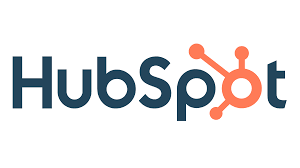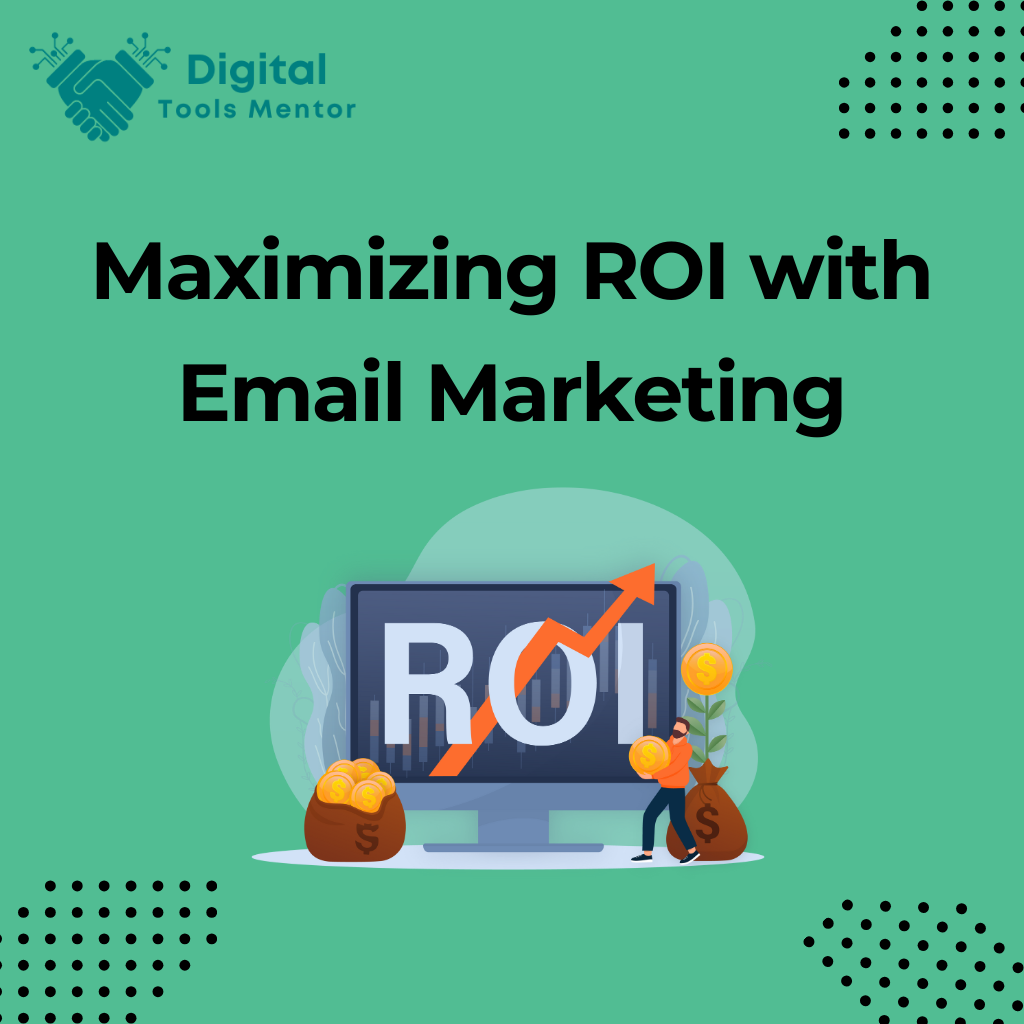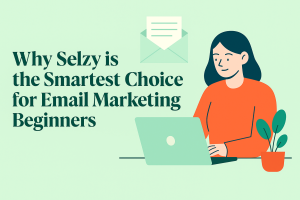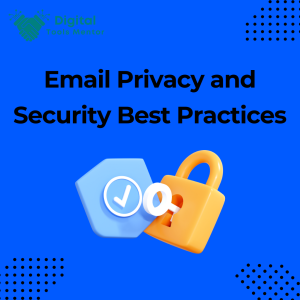Maximizing ROI with Email Marketing
Email marketing remains one of the most cost-effective strategies for reaching customers and driving business outcomes. ROI, or Return on Investment, in the context of email marketing, measures the profitability of the campaigns you deploy. It is calculated by comparing the revenue generated from email marketing efforts against the costs incurred to execute them. A higher ROI means that your email marketing is not only covering its costs but also generating substantial profit.
Understanding the ROI of email marketing involves recognizing its unparalleled ability to directly connect with customers. The key advantages include:
- Cost Efficiency: Compared to other marketing channels, email marketing often involves lower operational costs while still reaching a large audience. This can include costs for email marketing platforms, creative content development, and list management.
- Direct Engagement: Emails provide a direct line to your audience, allowing for personalized communication. This engagement can be finely tailored to meet the interests and needs of individual recipients, making it more likely to result in conversions.
- Measurable Outcomes: Email marketing campaigns are highly measurable, giving marketers clear insights into effectiveness and efficiency. Metrics such as open rates, click-through rates, and conversion rates can be directly correlated to specific campaigns, providing concrete data to calculate ROI.
- Scalability and Reach: With email marketing, you can reach a broad audience or focus on a niche segment without additional costs. Whether you’re reaching out to ten people or ten thousand, the effort and cost involved scale efficiently.
By leveraging these characteristics, businesses can maximize their marketing spend, achieving impressive returns on investment that other platforms may struggle to match. This fundamental understanding of ROI in email marketing sets the stage for developing strategies that not only resonate with your audience but are also aligned with your financial goals, ensuring that every dollar spent works harder for your business.
Setting Clear Objectives
Defining clear marketing goals is essential in email marketing because it sets the foundation for measuring the success and ROI of your campaigns. Clear objectives guide your strategy and help you align your email content, design, and targeting with what you want to achieve. They also provide a benchmark against which you can measure performance and make informed adjustments.
Importance of Clear Objectives:
- Direction and Focus: Having specific goals ensures that your email marketing efforts are directed towards achieving precise outcomes. This focus prevents the dilution of efforts and resources across too broad a range of activities.
- Enhanced Customization: When you know what you want to achieve, you can better customize your emails to speak directly to those goals, whether they are to inform, engage, convert, or retain customers.
- Optimized Resource Allocation: Clear goals allow you to allocate your budget, time, and other resources more efficiently, focusing on tactics and strategies that directly contribute to achieving your objectives.
- Improved Team Coordination: When everyone involved in your email marketing campaigns understands the goals, it’s easier to coordinate efforts and ensure that all team members are working in harmony towards the same endpoints.
Examples of Measurable Objectives for Email Campaigns:
- Increase Sales: Set a specific target for sales generated directly from email campaigns, such as increasing sales by 15% over the next quarter.
- Grow Subscriber Base: Aim to increase the number of email subscribers by a certain percentage or number within a specific timeframe, e.g., boost the subscriber list by 20% before the year ends.
- Enhance Engagement: Set goals for higher open rates and click-through rates compared to past performance, like aiming for a 30% open rate and a 5% click-through rate on all promotional emails.
- Improve Customer Retention: Aim to reduce churn by engaging inactive subscribers through targeted re-engagement campaigns, perhaps decreasing churn by 10% annually.
- Promote New Products or Services: Measure the effectiveness of email campaigns in raising awareness and initial sales of new products, setting targets like reaching 1,000 sales from email leads within the first month of launch.
- Boost Event Attendance: If promoting an event, a measurable objective could be to increase registrations by 25% compared to the previous similar event, using tailored event-specific emails.
By setting and striving towards these clear, measurable objectives, your email marketing efforts can be more precisely tailored and assessed, leading to more effective campaigns and a better return on investment.

Understanding Your Audience
Effective email marketing relies heavily on understanding who your audience is and what they need or want. Segmentation and effective data use are critical tools in achieving this understanding, enabling more targeted and personalized email campaigns that resonate with different groups within your audience.
How to Segment Your Audience for Better Targeting:
- Demographic Segmentation:
- Split your audience based on demographic factors such as age, gender, occupation, and education level. For example, products geared towards young adults might be marketed differently than those intended for retirees.
- Geographic Segmentation:
- Tailor your emails based on the geographic location of your subscribers. This can be as broad as country or as specific as city or neighborhood, which is especially useful for local events or store openings.
- Behavioral Segmentation:
- Segment your audience based on their past behavior, such as purchase history, email opens, and click-through activities. This allows you to send targeted offers like upsells, cross-sells, and re-engagement emails to those who have shown interest in specific products or have been inactive.
- Psychographic Segmentation:
- Consider your audience’s lifestyle, values, interests, and attitudes. This type of segmentation helps in crafting messages that emotionally connect with recipients, such as eco-friendly products to environmentally conscious segments.
- Engagement Level:
- Group your subscribers by their engagement level with your emails. High-engagement users might receive more frequent communications, while those less engaged might get content designed to reignite their interest.
Tips on Gathering and Utilizing Subscriber Data Effectively:
- Utilize Sign-Up Forms:
- Collect valuable information right from the start through detailed sign-up forms. Ask for relevant details that can aid in segmentation, like location, age, or interests, but balance it to avoid overwhelming new subscribers.
- Leverage Analytics Tools:
- Use email marketing platforms with robust analytics features to track how subscribers interact with your emails. Analyze open rates, click-through rates, and conversion data to refine your segmentation and targeting strategies.
- Conduct Surveys and Polls:
- Periodically send out surveys or polls to gather more detailed information about your audience’s preferences and feedback on your products or services. This can inform not only marketing strategies but also product development.
- Observe Purchasing Behavior:
- Monitor purchase history and browsing behavior to segment customers by their buying patterns. This information is invaluable for sending personalized recommendations and promotions.
- Regularly Update Data:
- Keep your data fresh and accurate by regularly updating your subscriber information and allowing subscribers to update their preferences. This helps maintain the relevance of your segmentation and ensures compliance with data protection regulations.
By understanding and implementing these segmentation techniques and data utilization tips, you can significantly enhance the effectiveness of your email marketing campaigns, leading to better engagement, customer satisfaction, and ROI.
Crafting Compelling Content
Creating engaging and relevant content is at the heart of successful email marketing. The content of your emails should capture attention, deliver value, and prompt recipients to take action. Here’s how to ensure your content is compelling:
Guidelines for Creating Engaging and Relevant Content:
- Know Your Audience:
- Tailor your content to reflect the interests and needs of your audience segments. Personalized content based on previous interactions, purchases, or demographic data enhances relevance and engagement.
- Use Attention-Grabbing Headlines:
- Craft subject lines that pique curiosity or offer clear benefits, making recipients want to open your email. Test different styles, like questions, teasers, or direct offers, to see what resonates best with your audience.
- Keep It Concise and Focused:
- Emails should be brief and to the point. Use short paragraphs and bullet points to make the content easy to scan. Each email should focus on a single message or offer to avoid confusing the reader.
- Incorporate Visuals:
- Use high-quality images, gifs, or videos that complement your text and enhance the message. Visuals can help explain complex information more clearly and make your emails more visually appealing.
- Provide Value:
- Every email should offer something valuable to the recipient, whether it’s informative content, entertainment, a special offer, or useful tips. Content that adds value encourages continued engagement and loyalty.
- Use a Friendly, Conversational Tone:
- Write as if you’re speaking directly to the reader in a friendly and approachable manner. This tone helps to humanize your brand and build a stronger connection with your audience.
- Employ Storytelling:
- Stories can be a powerful way to engage emotions and make your messages memorable. Share customer testimonials, case studies, or narratives about your products or services to create a deeper impact.
Importance of a Strong Call to Action:
- Direction for the Next Step:
- A strong call to action (CTA) guides readers on what to do next, whether it’s visiting a website, signing up for a webinar, or making a purchase. It turns passive reading into active engagement.
- Increases Conversion Rates:
- CTAs are the primary drivers of subscriber actions in email marketing. A compelling CTA can significantly increase conversion rates by clearly stating the benefits and making the action step easy and straightforward.
- Measurability:
- With clear CTAs, you can measure the effectiveness of your email content based on how many clicks and conversions each CTA receives. This data is crucial for optimizing future campaigns.
- Creates Urgency:
- Using urgent language or limited-time offers in your CTAs can create a sense of urgency, prompting quicker action from the recipients. This tactic is particularly effective for sales and event promotions.
- Optimization Opportunities:
- Regular testing and optimization of your CTAs (such as changing the wording, color, or placement) can lead to better performance and insights into what triggers your audience to take action.
By following these guidelines and emphasizing strong calls to action, your email content will not only engage and inform but also drive the desired actions that benefit your business.
Explore 23 Best Email Marketing Platforms in 2025
Optimizing Email Design
An effective email design enhances readability, engagement, and conversions. Here’s how you can optimize your email design by focusing on responsive layouts and incorporating visual elements strategically.
Best Practices for Responsive Email Design:
- Use a Fluid Layout:
- Employ a fluid layout that adjusts to the size of the viewer’s screen. This ensures that your email looks good whether it’s viewed on a desktop, tablet, or smartphone.
- Simplify Your Design:
- Keep the design simple and uncluttered. Use ample white space around text and between elements to improve readability and focus on the message.
- Employ a Single Column Layout for Mobile:
- A single-column layout works best on mobile devices as it makes your content easily scrollable and eliminates the need for the user to zoom or scroll horizontally.
- Optimize Images:
- Use high-quality images that are optimized for quick loading. Ensure that all images have alt text so that the message comes across even if the images don’t load.
- Adjustable Font Sizes:
- Use larger font sizes to improve readability on small screens. Headers should be distinct and larger than body text to guide the reader’s eye through the content.
- Touch-Friendly Buttons:
- Make CTA buttons large enough to be easily clickable on touch devices. A minimum size of 44×44 pixels is generally recommended.
- Test Across Devices:
- Always test your email’s responsiveness across different devices and email clients to ensure it displays correctly everywhere.
Visual Elements That Increase Engagement and Conversions:
- Compelling Headers:
- Use visually striking headers to grab attention. Consider integrating your brand colors and logos consistently to enhance brand recognition.
- Use of Color:
- Employ color strategically to draw attention to key elements like CTAs. Colors can evoke emotions and responses, so choose those that align with the action you want the user to take.
- Incorporate Infographics:
- Infographics can summarize complex information in a digestible format, making it easier for readers to understand and engage with your content.
- Relevant Images:
- Include images that are relevant to the content. Personalized images, like those showing products the user previously viewed, can increase relevance and engagement.
- Animations and GIFs:
- Use animations or GIFs sparingly to add a dynamic element to your emails without distracting from the main message. They can be particularly effective in promotional emails to showcase products or highlight changes.
- Consistent Branding:
- Maintain consistent branding across all your emails. This includes your logo, color scheme, and font choices to strengthen brand identity and trust.
- Social Proof:
- Integrate elements of social proof such as customer testimonials or user count badges to build credibility and trust, which can help increase conversions.
- Progress Bars:
- Consider including progress bars in transactional emails, like order confirmations or account setups. They visually guide the user through the process, enhancing user experience and satisfaction.
By focusing on these design and visual element strategies, your emails will not only look good on any device but also engage and convert your audience more effectively.
Personalization Techniques
Effective personalization in email marketing goes beyond just addressing a customer by name. It involves delivering content that resonates with the individual’s preferences, behavior, and stage in the customer journey. Here’s how to leverage advanced personalization techniques in your email campaigns:
Advanced Strategies for Personalizing Emails:
- Dynamic Content:
- Use dynamic content that changes based on the user’s past interactions with your brand. For instance, if a customer frequently purchases books from a specific genre, your emails can dynamically display new releases in that genre.
- Behavioral Triggers:
- Implement emails triggered by specific behaviors, such as browsing a product without purchasing or abandoning a shopping cart. These emails can offer further information, a discount, or a reminder to complete the purchase.
- Segmentation Using AI:
- Employ AI tools to analyze customer data and create highly detailed segments. AI can identify patterns and preferences that are not obvious but can significantly impact campaign effectiveness.
- Personalized Product Recommendations:
- Include personalized product recommendations based on the customer’s purchase history and similar customers’ behaviors. This not only makes the email more relevant but also increases the likelihood of conversion.
- Lifecycle Emails:
- Send emails that correspond to different stages of the customer lifecycle, such as welcome emails, re-engagement emails, and loyalty rewards, tailored to the individual’s journey with your brand.
- Customized Email Timing:
- Optimize send times for each recipient based on when they are most likely to open and engage with your emails. Machine learning can help predict optimal delivery times at an individual level.
- Interactive Emails:
- Incorporate interactive elements like quizzes, polls, or sliders that adapt the content or offers based on the user’s choices, providing a more engaging and personalized experience.
Case Studies Showing the Impact of Personalization on ROI:
- Retail Case Study:
- A well-known retail brand implemented personalized product recommendations in their emails. By analyzing user data to understand individual preferences and purchasing habits, they could tailor their emails with products each customer was likely to be interested in. This strategy resulted in a 25% increase in conversion rates and a 15% increase in average order value, significantly boosting their ROI.
- Travel Industry Case Study:
- A travel agency used personalized emails based on past booking behavior and browsing history to recommend holiday destinations. They included personalized flight and hotel options, as well as special deals specific to the customer’s interests. This approach led to a 30% higher click-through rate and a 10% uplift in bookings compared to non-personalized campaigns.
- Subscription Service Case Study:
- An online streaming service sent out personalized emails suggesting movies and shows based on the viewer’s past watching habits. This personalization not only improved engagement by keeping the content relevant but also increased subscription renewals by 20%.
These case studies highlight how effective personalized email strategies can be in enhancing engagement, improving customer satisfaction, and ultimately driving higher ROI. By implementing these advanced personalization techniques, marketers can create more meaningful connections and significantly boost their campaign effectiveness.
Testing and Optimization
To maximize the effectiveness of your email marketing campaigns, continuous testing and optimization are essential. A/B testing is a crucial method for determining which strategies work best for your audience. Additionally, tracking the right metrics helps you understand and enhance the impact of your emails.
How to Conduct A/B Testing for Different Elements of Your Emails:
- Choose One Variable at a Time:
- To accurately measure the effect of a single change, only test one variable at a time. This could be anything from the subject line, CTA wording, email layout, to the timing of the email.
- Define Your Goal:
- Clearly define what you are trying to improve: Is it the open rate, click-through rate, or conversion rate? This goal will determine what element you should focus on testing.
- Create Two Variants:
- Develop two versions of your email, each with a different iteration of the variable you’re testing. For example, if you’re testing subject lines, create two emails that are identical except for the subject line.
- Segment Your Audience Randomly:
- Divide your email list randomly to ensure that each group is statistically similar. Each segment should receive one version of the email.
- Run the Test Simultaneously:
- Send the emails at the same time to control for timing variables that could affect the results.
- Analyze the Results:
- Use your email marketing platform’s analytics tools to evaluate which version performed better against your predefined goal.
- Implement the Findings:
- Apply the successful elements from your A/B tests to future emails and continuously use A/B testing to refine your approaches.
Tools and Metrics to Measure the Effectiveness of Your Emails:
- Analytics Tools:
- Use tools such as Google Analytics, Mailchimp, HubSpot, or Campaign Monitor, which provide extensive insights into how your emails are performing.
- Open Rate:
- Tracks how many people open your emails. This metric helps gauge the effectiveness of your subject lines and the initial appeal of your emails.
- Click-Through Rate (CTR):
- Measures how many people clicked on links within the email. This is vital for understanding how engaging your email content is to your audience.
- Conversion Rate:
- Assesses how many clicks led to a desired action, such as filling out a form or making a purchase. This is crucial for evaluating the ultimate effectiveness of your email in driving business goals.
- Bounce Rate:
- Monitors how many of your emails were not successfully delivered. A high bounce rate may indicate issues with your email list health.
- Unsubscribe Rate:
- Keeps track of how many people opt-out of your email list after receiving an email. This can be a signal of how relevant and engaging your content is.
- Revenue Per Email:
- Calculates the revenue generated from each email sent. This is especially important for transactional emails and campaigns with direct calls to action.
By consistently employing A/B testing and closely monitoring key metrics with these tools, you can refine your email marketing strategy to better meet the needs of your audience and improve your ROI.
Automating Email Campaigns
Automation in email marketing is a powerful tool that enhances the efficiency, timing, and relevance of your communications. By automating emails, you can ensure that the right messages reach the right people at the right time, without constant manual intervention. This strategic approach not only saves time but also significantly boosts engagement and revenue.
Benefits of Using Automation to Enhance Timing and Relevance:
- Timely Communications:
- Automated emails can be triggered by specific actions, ensuring that your message reaches the audience precisely when it is most relevant. For example, a welcome email sent immediately after a user subscribes can make a strong first impression.
- Increased Personalization:
- Automation allows for dynamic content insertion based on user data, leading to highly personalized emails. This relevancy increases the likelihood of engagement and conversion.
- Scalability:
- As your email list grows, it becomes impractical to manually manage communications with each subscriber. Automation scales your email marketing efforts, allowing you to maintain personalized communication with thousands of subscribers effortlessly.
- Consistent Engagement:
- Automated email workflows ensure consistent touchpoints with your audience, helping to nurture leads and build lasting relationships without additional resources.
- Efficient Resource Allocation:
- Automation frees up your marketing team to focus on strategy and creative development, rather than getting bogged down in repetitive tasks.
Examples of Automation Workflows That Save Time and Increase Revenue:
- Welcome Series:
- Automatically send a series of welcome emails when someone joins your mailing list. These emails can introduce your brand, provide valuable information, and encourage new subscribers to make their first purchase.
- Abandoned Cart Reminders:
- Send automated emails to customers who have left items in their shopping carts. These reminders can include images of the abandoned products, a special discount code, or a message highlighting the benefits of the product to encourage completion of the purchase.
- Re-engagement Campaigns:
- Target subscribers who have not interacted with your emails over a certain period. Automated re-engagement campaigns can reignite interest with a special offer or an update on what’s new with your brand.
- Birthday or Anniversary Emails:
- Automate sending personalized offers or messages on your customers’ birthdays or on the anniversary of their first purchase. This personal touch can enhance customer loyalty and encourage repeat business.
- Post-Purchase Follow-up:
- Automatically send emails post-purchase to thank customers, provide additional product usage tips, or cross-sell related products based on the original purchase. This can increase customer satisfaction and lifetime value.
- Subscription Renewal Reminders:
- For subscription-based services, automated emails can remind customers before their subscription expires, offering them an easy renewal option. This ensures continuity of service and reduces churn.
By integrating these automation strategies into your email marketing, you can create more efficient, targeted, and effective campaigns that drive engagement and revenue while saving time. Automation not only streamlines operations but also provides a richer, more personalized experience for your customers.
Integrating with Other Marketing Channels
Using email marketing in conjunction with other channels like social media, blogs, and other platforms can amplify your marketing efforts, creating a seamless and cohesive experience for your audience. Integration across these channels ensures consistency in messaging and maximizes the reach and effectiveness of your marketing campaigns.
How to Use Email in Conjunction with Social Media, Blogs, and Other Platforms:
- Social Media Integration:
- Include social sharing buttons in your emails to encourage recipients to share your content on their social networks.
- Promote your social media pages in your email campaigns to increase your followers.
- Use emails to alert subscribers to live events on social media, such as Facebook Live or Instagram Stories, to increase participation.
- Blog Content Promotion:
- Use email newsletters to promote recent blog posts. Provide a summary or a compelling excerpt in the email with a link to read more on your website.
- Consider a regular feature in your emails that highlights top content or staff picks from your blog to drive traffic and increase engagement.
- Leveraging Video Platforms:
- Embed video content from YouTube or other platforms into your emails to increase engagement rates. Videos can be product demos, behind-the-scenes looks, or educational content.
- Use email to promote new video releases or exclusive content, driving traffic to your video platforms.
- Integrating E-commerce Platforms:
- Use emails to promote specific products or sales. Link directly to product pages to facilitate an easy purchase process.
- After a purchase, automate thank-you emails that suggest other relevant products based on the buyer’s history (cross-selling).
- Event Promotion:
- Utilize email to increase awareness and registrations for webinars or in-person events. Follow up with additional information, reminders, and last-minute sign-up opportunities.
- Post-event, send emails with key takeaways, additional resources, or links to event recordings to maintain engagement.
Strategies for Creating a Cohesive Cross-Channel Marketing Experience:
- Consistent Branding:
- Maintain consistent use of logos, color schemes, and messaging across emails, social media, blogs, and other platforms. This reinforces brand identity and enhances customer recognition and trust.
- Coordinated Messaging:
- Plan your content calendar to align messages across all channels. For instance, if you’re launching a new product, coordinate blog posts, social media updates, and email newsletters to support the launch comprehensively.
- Cross-Promotion Tactics:
- Promote your marketing channels within each other. For example, use social media to tease upcoming email-exclusive content or discounts, and encourage email sign-ups directly on your blog and social media pages.
- Utilize Retargeting:
- Integrate email marketing data with retargeting strategies on social media and other advertising platforms. Target users who opened specific emails with social ads related to the content they engaged with.
- Unified Customer Experience:
- Ensure that all touchpoints reflect the customer’s interactions and preferences. If a customer expresses interest in a topic via email, reflect this interest in the social media content they see.
- Feedback Loop:
- Use insights from one channel to improve others. For example, topics that generate a lot of engagement on social media might be good candidates for deeper exploration in email newsletters or blog posts.
By integrating email marketing with other digital marketing platforms, you create a unified and comprehensive marketing strategy that leverages the strengths of each channel, maximizes your reach, and enhances the customer journey.
Analyzing and Acting on Data
Effectively analyzing the performance of email campaigns and using that data to inform future marketing decisions are crucial for optimizing strategies and improving ROI. Here’s how you can leverage tools for tracking and utilize insights from your data.
Tools for Tracking and Analyzing Email Campaign Performance:
- Email Marketing Platforms:
- Mailchimp, Constant Contact, and Campaign Monitor provide built-in analytics that includes metrics such as open rates, click-through rates, conversion rates, and more. These platforms often offer visualization tools to help you understand trends and patterns.
- Web Analytics Tools:
- Google Analytics can be integrated with your email marketing to track how subscribers interact with your website post-click. Set up goals to track conversions directly from email campaigns, such as purchases, sign-ups, or other desired actions.
- Customer Relationship Management (CRM) Systems:
- CRM systems like Salesforce or HubSpot can track the entire customer journey from email interactions to final conversions. This integration allows for deeper insights into how email marketing impacts overall business objectives.
- Heatmap Tools:
- Tools like Hotjar or Crazy Egg provide heatmaps for your landing pages that can be linked to email campaigns, showing where users click and how far they scroll, giving insights into user behavior after they click through from your emails.
- A/B Testing Software:
- Platforms like Optimizely or VWO can run A/B tests not just on your emails but also on the landing pages linked from your email campaigns. This helps in optimizing the entire funnel, not just the email itself.
- Social Media Analytics:
- If your emails include social media content or prompts to share on social media, tracking engagement through social media analytics tools can also provide insights into the reach and effectiveness of your content beyond email.
How to Use Insights from Data to Make Informed Marketing Decisions:
- Segmentation Adjustments:
- Analyze which segments respond best to certain types of content or offers. Use this information to tailor future emails more closely to the preferences of each segment, potentially increasing engagement and conversions.
- Content Optimization:
- Identify which types of content or which specific calls to action yield the highest engagement or conversion rates. Use these insights to refine the content of future campaigns to better meet the interests of your audience.
- Personalization Enhancements:
- If data shows particular trends in how different groups interact with your emails, increase the level of personalization in your campaigns to cater more specifically to these trends.
- Send Time Optimization:
- Analyze when your emails are most likely to be opened and adjust your send times accordingly to maximize visibility and engagement.
- Testing Strategy Refinement:
- Use results from A/B testing to continuously refine your email elements, from subject lines to images to CTA buttons, ensuring each component is optimized for performance.
- Lifecycle Marketing Improvements:
- Evaluate the effectiveness of emails at different stages of the customer lifecycle. Adjust the timing, frequency, and content of emails in your lifecycle marketing to better align with customer behavior and preferences.
- Cross-Channel Strategy Integration:
- Use email data in conjunction with data from other marketing channels to get a holistic view of how your marketing strategies intersect and influence each other. Adjust strategies across channels based on these insights to create a cohesive and effective overall marketing plan.
By effectively using these tools and strategies to analyze and act on your data, you can ensure that your email marketing campaigns are continuously improving, becoming more sophisticated, and driving greater results for your business.
Conclusion
In this post, we’ve explored various essential aspects of maximizing ROI through effective email marketing. From setting clear objectives and understanding your audience to crafting compelling content and integrating with other marketing channels, each element plays a crucial role in enhancing your email marketing efforts. We also delved into the importance of testing and optimization, automating email campaigns, and the critical use of data analytics to inform marketing decisions.
To start implementing these strategies, begin by auditing your current email marketing efforts and identifying areas for improvement. Consider the segmentation of your audience and personalize your content to increase relevance and engagement. Utilize A/B testing to refine your email elements and integrate automation to ensure timely and efficient communication with your subscribers. Finally, leverage analytics to continually assess the effectiveness of your campaigns and make data-driven adjustments.
By adopting these strategies, you can enhance the engagement and effectiveness of your email campaigns, ultimately driving better ROI and achieving your marketing goals.




